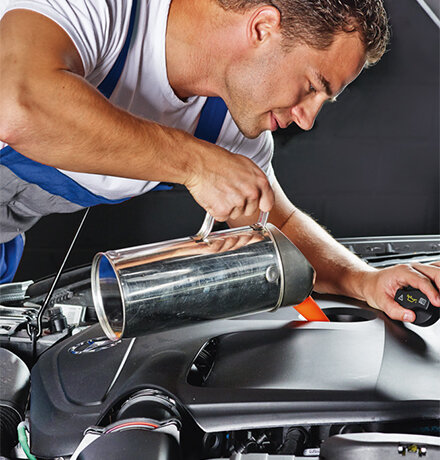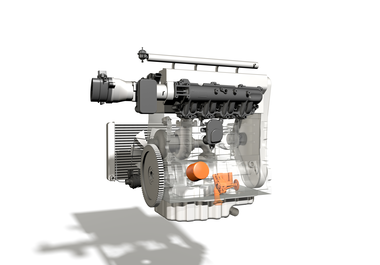
When is an engine consuming too much oil?
Information on diagnostics
What constitutes excessive oil consumption? How do you calculate the oil consumption for cars and utility vehicles? And what is the maximum permissible oil consumption of an engine? You will find the answers in this article.
In practice, opinions about the point at which oil consumption is excessive differ widely in different countries.
Due to the running clearances required as part of the design, the moving parts in an engine, particularly the pistons and valves, are not 100 percent gas-tight and oil-tight. This means that oil is consumed at a low but steady rate. In the combustion chamber, the oil film on the cylinder surface is also widely subject to high-temperature combustion. This causes the engine oil to vaporise, burn and be released into the environment with the exhaust gas.
Workshop manuals and operating instructions often provide information on the maximum permitted oil consumption for the engine. If the manufacturer's specification is not available, max. 0.25 to 0.3 % for utility vehicles and up to 0.5 % oil consumption for buses can be assumed.
Oil consumption in modern passenger car engines is usually less than 0.05 %; the maximum permissible oil consumption stands at 0.5 % (all percentage values relate to actual fuel consumption).
Normal oil consumption may be higher for older engine types, stationary engines and under special operating conditions.
A decision with regard to the need for any remedial measures can be made by comparing the actual oil consumption with the maximum permissible oil consumption.
Diesel engines consume more engine oil than petrol engines. Engines with a turbocharger also need more engine oil than engines without a turbocharger due to lubrication of the turbocharger.
For technical reasons, oil consumption is at its lowest after the engine's running-in phase and increases over the life of the engine due to wear. Wear within the engine will affect all components equally. For this reason, carrying out partial repairs, such as replacing only pistons or piston rings, often results in minimal improvement for oil consumption levels.
Example calculation for utility vehicles
A utility vehicle consumes roughly 40 litres of fuel for 100 km travelled. This can be extrapolated to 400 litres of fuel for 1000 km.
- 0.25 % of 400 litres of fuel equals 1 litre of oil consumption/1000 km
- 0.5 % of 400 litres of fuel equals 2 litres of oil consumption/1000 km
Example calculation for passenger cars
A passenger car consumes roughly 8 litres of fuel for 100 km travelled. This can be extrapolated to 80 litres of fuel for 1000 km.
- 0.05 % of 80 litres of fuel equals 0.04 litre of oil consumption/1000 km
- 0.5 % of 80 litres of fuel equals 0.4 litre
